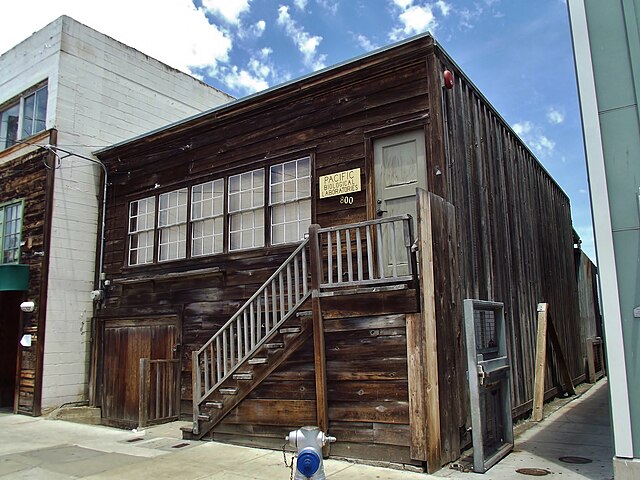If you’ve read Cannery Row by John Steinbeck (published in 1945), you may remember the character Doc. The novel is set in Monterey, California, during the Great Depression (1929 to about 1939), when Monterey was primarily a fishing village. The title refers to a street where several fish-packaging businesses are located; it was informally called “Cannery Row,” and now it’s actually the street name, even though now Monterey is more of a tourist town.
Steinbeck based the novel on his own experiences; he lived in that area during the Great Depression, and both the location and some of the characters depict real people Steinbeck knew. In particular, Doc was based on Ed Ricketts, who really did run a small marine biology lab in Monterey. Ricketts was born May 14, 1897 in Chicago in the US.
Ricketts was a bright child, but often got in trouble in school because he frequently corrected the teachers on their use of words and grammar. He was always right, but the teachers did not enjoy being corrected by a ten-year-old boy. He spent a year in college, then was drafted in 1917 to serve in the Medical Corps during World War I. After the war he returned to college to study zoology, but dropped out and spent months hiking around the southern part of the US. He traveled by foot from Indiana to Florida, over 1100 miles. He published an article in Travel magazine about his trip, then returned to college in Chicago.
Ricketts never did finish his college degree, but in spite of that moved to California and founded Pacific Biological Laboratories in 1923. In Steinbeck’s novel, the lab is called Western Biological Laboratory. The company’s main business was selling prepared specimens on microscope slides to schools and labs. Steinbeck invested in the real-life lab, and eventually became part owner.
Ricketts and Steinbeck were close friends, and Steinbeck even lived with Ricketts at the lab for a while. Together they published The Sea of Cortez based on a boat trip they took to the real Sea of Cortez (aka the Gulf of California). Ricketts also wrote and published Between Pacific Tides, a scientific text discussing the ecology of the North American Pacific coast. It’s considered a classic text, and is still in print (fifth edition).
Ricketts didn’t just inspire Steinbeck; Joseph Campbell, mythologist who wrote The Hero With a Thousand Faces, lived in Monterey in 1931 and 1932 and became friends with Steinbeck and Ricketts. Like Steinbeck, Campbell started writing a novel featuring Ricketts, but unlike Steinbeck, never finished it. Campbell’s biographer credits Ricketts with the ideas Campbell developed more fully in his work on mythology. In addition, Henry Miller met Ricketts and mentioned him in The Air-Conditioned Nightmare, published in 1945. Part of Ricketts’ appeal was evidently his philosophical ideas. He wrote at least three philosophical essays, but they were never published during his lifetime. You can find them in the 2006 book Breaking Through: Essays, Journals, and Travelogues of Edward F. Ricketts.
Ricketts’ life changed quite a bit after 1945, when Cannery Row was published. It was widely known that he was the real-life inspiration for “Doc,” and he became an unwilling celebrity. His lab on Cannery Row became a tourist destination, and journalists frequently interviewed him, mostly asking about Steinbeck. Ricketts was reportedly exasperated by the attention, and Steinbeck didn’t make it any better; he continued to base characters on Ricketts. “Doc” appears again in Sweet Thursday (the sequel to Cannery Row), and he’s the basis for “Friend Ed” in Burning Bright, “Doc Burton” in In Dubious Battle, “Jim Casey” in The Grapes of Wrath, and “Doctor Winter” in The Moon is Down.
Ricketts were planning a trip with Steinbeck to British Columbia in 1948 to research a book about the marine life there. But just a week before they left, Ricketts’ car was hit by a train, killing him. There’s a life-sized bust of Ricketts at the site of the accident. There are over 16 marine species named after Ricketts, and the Monterey Bay Aquarium Research Institute has a submersible called the Doc Ricketts.
The lab is still there at 800 Cannery Row:

By Mark Miller – Own work, CC BY-SA 3.0, https://commons.wikimedia.org/w/index.php?curid=27092103
